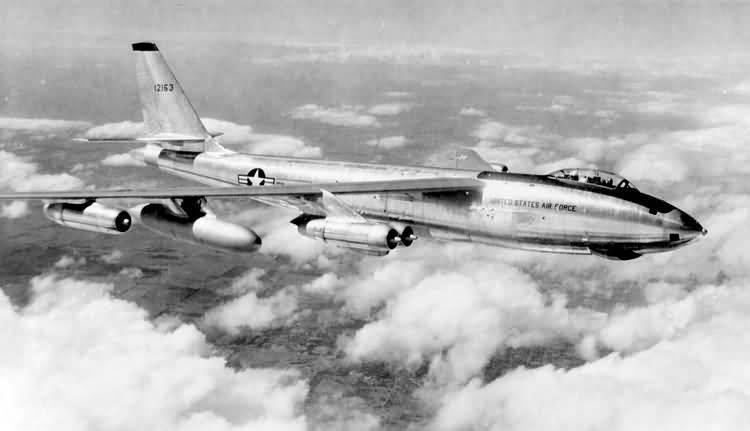THUNDER BAY - The mystery surrounding a historic, yet secretive U.S. military plane crash is resurfacing 63 years later.
On November 30, 1956, a B-47E Stratojet crashed near Seagull Lake - located roughly two hours north of Thunder Bay - leaving three U.S. air force men dead.
The Cold War-era jet was returning from a show-of-force mission in the Arctic Circle when a problem with aileron power unit sent the plane into a tailspin.
Local adventurer and YouTuber Rob Farrow has paid multiple visits to the site since learning about it, and is hoping to dedicate a plaque to the airmen who lost their lives.
“Everybody deserves some sort of grave marker,” he said.
Farrow, who documents his outdoor adventures on his popular YouTube channel “Outdoor Rob” is the latest in a number of curious historians who have sought out the crash site. The site is inaccessible by car, and requires roughly 90 minutes of bushwhacking.
“Even when I was out there and sure of where I was, I still walked past the site,” said Farrow, who mentioned the extremely rough terrain at the site. “It’s tough going. Thick Northwestern Ontario bush."
Farrow became interested in the crash in 2012, and after doing research at the local library and online, set out to find it.
But what intrigued Farrow the most was the lack of information, the apparent secrecy about the crash, and the possibility of nuclear weapons aboard the plane.
According to a speech given by Hon. Col. Fred Johnson of the Thunder Bay military museum, and obtained by tbnewswatch, whether or not the plane carried nuclear weapons has never been confirmed.
“It’s mostly just hearsay. It’s never been confirmed or denied whether there’s been nuclear weapons on board,” Farrow said. “If there were weapons on board, I’m sure they would have made every possible effort to recover them.”
The crash occurred during the height of the Suez crisis when tensions between the Soviet and U.S. were at its peak. The B-47 that crashed in Northwestern Ontario was likely a part of Operation Powerhouse - a Soviet intimidation mission performed by the U.S. Air Force. The operation simulated an attack by an enemy force that would threaten northern borders and targets within the continental U.S.
A website dedicated to B-47’s that has record of the crash reads, “ At the time it was standard operating procedure for unit… to carry nuclear weapons. Though official records make no mention of it, a reconnaissance pilot... who located the crash site, stated they were looking for the remains of the aircraft and the weapons that they were carrying.”
However, information on the crash remains extremely elusive.
Farrow says he contacted the national archives in Ottawa, who claimed no record.
“It was pretty hushed,” Farrow said.
The archived edition of the News-Chronicle from December 1, 1956 reads “Hunt Survivors in Crash of Jet in Black Sturgeon.”
The article confirms one man, Maj. Robert L. Slaine, survived the crash. Slaine went on to write about his life as an American bomber pilot, and included a chapter about the crash in his book.
He was the only survivor of the crash, and 19 years prior, a local by the name of John Currie found his ejector seat during a fishing trip at Lake Sigh, roughly 20 miles south of the crash site.
“We didn’t know what it was when we first found it. We dragged it about a mile through the bush back to the boat.”
At the time, Currie did not know the significance until his father told him. After making the front page in the local newspaper, Currie has kept the seat in his possession despite attempts from others to buy it from him.
“We were asked to donate it to a museum, but they couldn’t assure us the seat would be returned if the museum closed,” he said. “We’re never going to get rid of it, it will be [at his camp] forever.”
In regards to the plaque, Currie also thinks it’s a good idea to have something to remember the airmen by.
“I think [the site] should be kept sacred,” he said.
For those who do wind up making the trek, they may one day be able to read “something along lines of ‘the final mission or flight of the three U.S. air force men.’ And their names will be on it,” says Farrow.
“Like I said, everybody deserves some sort of grave marker. Everybody deserves to be remembered,” he said.
